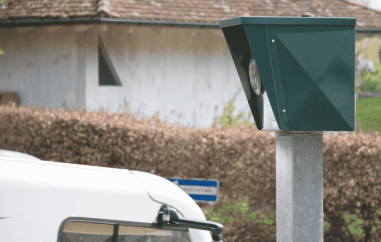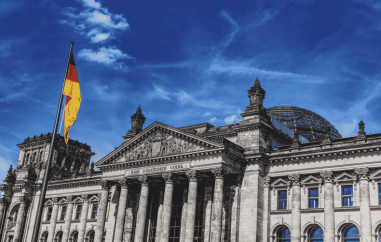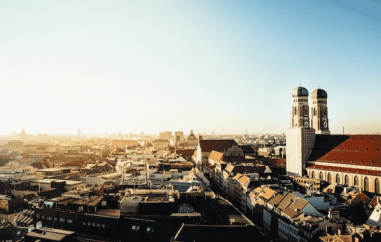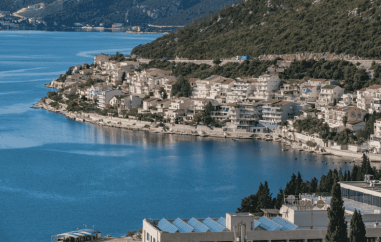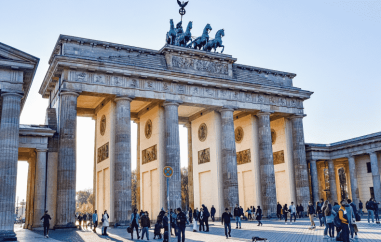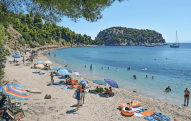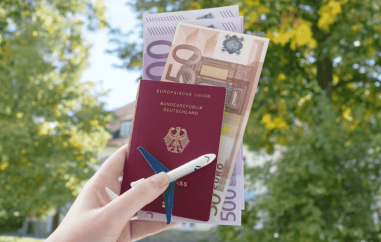Bavaria's second city
Few cities have had to suffer for their beauty like Nuremberg. Thanks to its historic Imperial Castle, walled medieval old town, arts and movie-like charm, it was chosen as the backdrop for some of the most infamous Nazi propaganda movies ever made. For many English-speakers the most famous parts of the city's history are still the Nuremberg Rallies, Leni Riefenstahl's "Triumph of the Will", the Nuremberg race laws and war-crime trials. Yes, this was where the Nazis strutted their stuff. Despite this dark chapter, don't let that stop you from seeing one of the most fascinating and beautiful cities in Germany.
While you could go for another day of Alpine scenery and Lederhosen-spotting south of Munich, why not set your sights northwards instead? Less than two hours away, above the Weisswurst-equator in the land of little (but tasty) grilled sausages, Nuremberg has its own traditions. You really only need to know three things to make friends here: 1) you're in Franconia now, 2) Albrecht Dürer is the most well-known and important German artist in history and 3) FC Nuremberg's day will come. The first one is fact, the second is probably true, the third...well, no one knows the hour or the day, but still they believe.
The old town is still surrounded by over 5 kilometres of city walls dating from the 1400s. Your first glimpse of these will give you an idea of what's in store. Sandstone. A lot of sandstone. The city's name comes from the word for 'stone mountain' and, if you want sandstone, Nuremberg is it. At first glance, it may all look a bit heavy with the big stone blocks and towers, but there is still a word in German called steinreich, "stone rich", and this city was that. Known as 'the empire's little treasure chest', by 1500 this was one of the most important market centers in central Europe. And it was three times the size of Munich. And it is where the works of Copernicus were first published. And was home to the crown jewels of the Holy Roman Empire. And where the first globe was made in the world. And home to Albrecht Dürer and his flowing mane of naturally curly hair (which he seemed to be quite proud of, perhaps overly).
We know this last part because Dürer painted a wonderful (and famous) self-portrait at the tender age of 29 while sporting a fur-trimmed jacket and his rock-star-quality golden locks. Both born and buried in Nuremberg, he was one of the first artists to create self-portraits, to sign his works, to paint nature and landscapes. For some people his works are almost difficult to appreciate now because they look so approachable to us, so 'normal'; pictures of people, plants and animals. But if they look normal to us in 2012, one has to imagine how groundbreaking they were in 1512 when most painting was still limited to religious scenes and portraits of the royals. He also wrote, created both amazing and cryptic engravings, studied geometry and is today considered the greatest artist of the northern Renaissance. His wood-frame house still stands just within the city walls on Tiergärtnertorplatz, having survived the bombings of World War II. Inside, a museum shows how he lived and worked.
Until September 2 this year, you'll also find the exhibition "The Early Dürer" in the Germanic Museum in Nuremberg. The Germanic Museum is the largest museum of German culture in the world, well worth visiting just for that, and currently has the largest Dürer exhibition in 40 years, a once-in-a-lifetime chance to see so many of his works displayed together. But, alas, you won't be able to see his famous aforementioned self-portrait there. In a decision politely described as controversial, the curators at the Alte Pinakotheke museum in Munich wouldn't loan out what could be Dürer's most famous painting to the city of his birth. Due to concerns about wear and tear during transport, or controversy about which city is the rightful owner, Dürer and his hair will stay put in Munich and "The Early Dürer" will have to do without. While disappointing to the Franconians, this decision will help to ensure the continuation of another Nuremberg tradition steeped in history: its occasionally one-sided rivalry with Munich.
